
Shalin on Katahdin at the completion of his A.T. thru-hike
 few months before I headed to Springer Mountain, a friend suggested I reach out to former thru-hikers to help prepare for my own journey. It seemed like a great idea: the web offered a lot of advice but I found it difficult to wade through all the information. Luckily, the Appalachian Trail Conservancy (ATC) keeps an online directory of thru-hiker alumni organized into groups with shared interests and identities. As a queer, South Asian male, I tapped into the LGBT and South Asian directories and copied all of the email addresses into a single email. I sent out a list of 15 questions to approximately 30 people and expected almost no one to respond. I assumed they were too far from the Trail either in terms of time or distance; but, the next morning, I woke up to about 20 responses containing advice on gear, resupply, budgeting, and a whole host of other Trail topics. Over the span of a week everyone replied. It was my first insight into the singularity and generosity of the thru-hiking community and A.T. community in general.
few months before I headed to Springer Mountain, a friend suggested I reach out to former thru-hikers to help prepare for my own journey. It seemed like a great idea: the web offered a lot of advice but I found it difficult to wade through all the information. Luckily, the Appalachian Trail Conservancy (ATC) keeps an online directory of thru-hiker alumni organized into groups with shared interests and identities. As a queer, South Asian male, I tapped into the LGBT and South Asian directories and copied all of the email addresses into a single email. I sent out a list of 15 questions to approximately 30 people and expected almost no one to respond. I assumed they were too far from the Trail either in terms of time or distance; but, the next morning, I woke up to about 20 responses containing advice on gear, resupply, budgeting, and a whole host of other Trail topics. Over the span of a week everyone replied. It was my first insight into the singularity and generosity of the thru-hiking community and A.T. community in general.
One of the emails that stood out came from Neal Hanlin. Neal, or “O.G.,” was a LGBT hiker from South Carolina who signed up as a mentor to prospective hikers. Over the course of four weeks, he patiently fielded all of my follow-up questions until I felt fully prepared and confident. Fast-forward two years, Neal and I completed our Triple Crowns in the same year. Neal thru-hiked the Appalachian Trail in 2009, the Pacific Crest Trail (PCT) in 2014, and the Continental Divide Trail (CDT) in 2017. I thru-hiked these same trails in 2015, 2016, and 2017. Over the course of our treks, our relationship transformed. We were mentor-mentees and, now, we are trail brothers. This year, when we both hiked the CDT, we spoke every week helping each other plan routes, determine resupply, compile gear lists, or simply to check in with each other. Now, we are both on another type of journey: figuring out what to do post-Trail. To bring it full circle, I’ve decided to ask Neal a new set of questions about life after the Trail, a situation so many long-distance hikers find themselves in.
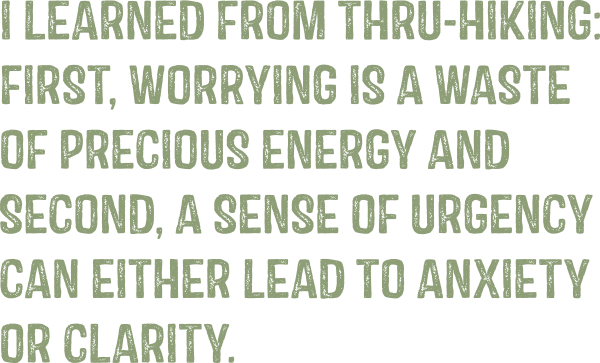
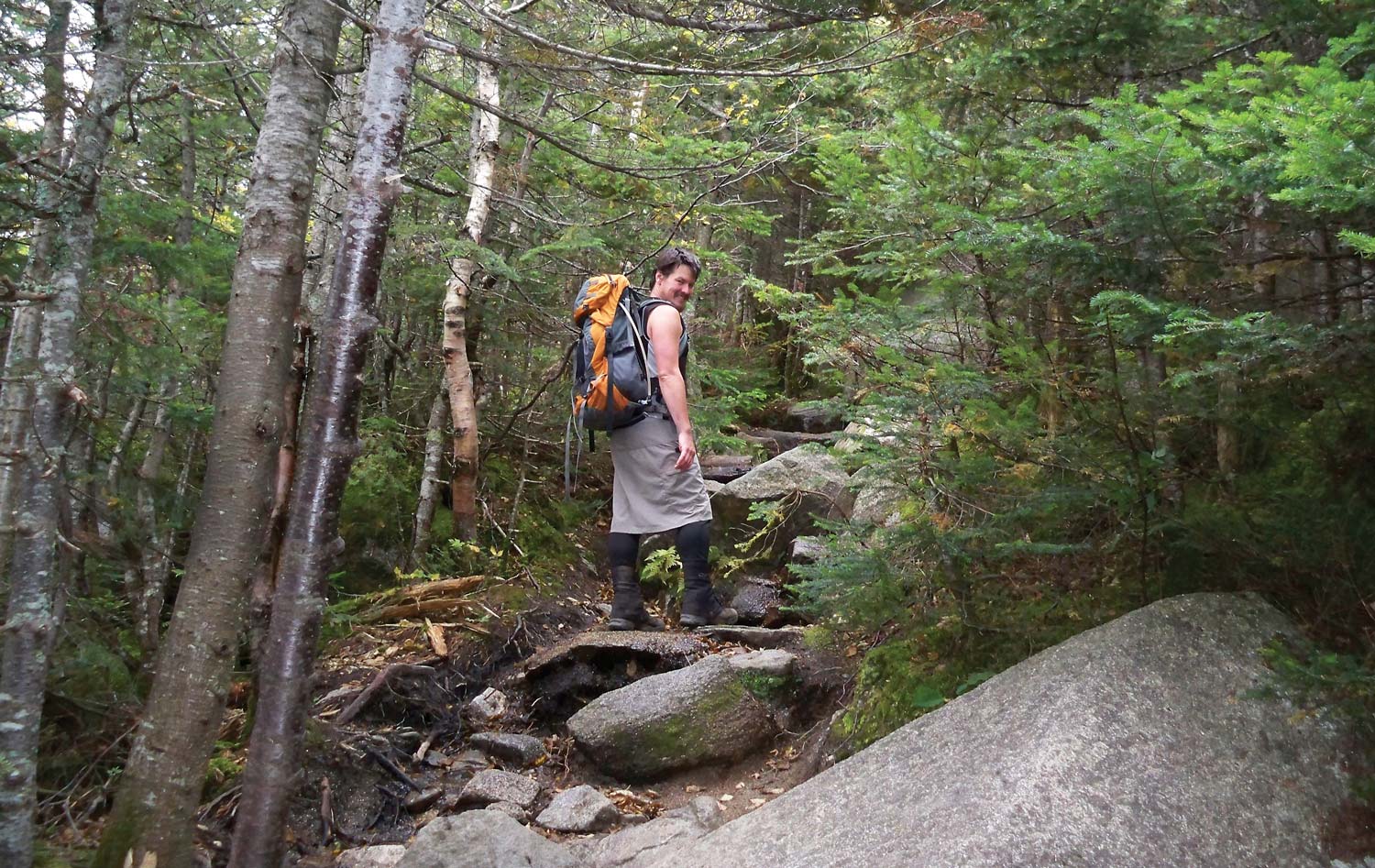
Neal in Baxter State Park in Maine
SD: It’s been six years since you thru-hiked the A.T., what have you been up to since?
NH: Before I hiked the A.T., I was following my degree in transportation logistics. I was getting promoted and networking with the right people in the industry. However, while I was advancing, I didn’t feel remotely fulfilled. I knew I had to find something else that would make me less complacent and challenge me. Hiking the A.T. changed my perspective completely. After I completed my thru-hike, I caught the hiking bug and focused all my time and energy on completing the Triple Crown. Between trails, I worked several jobs — some in the transportation logistics industry and even a part time job at REI, which helped me squirrel away just enough money to achieve my hiking goals. Now, I am focusing on getting back to work and finding a long-term career or perhaps going back to school.
SD: But, career is one thing and location is another; you also changed location — from East Coast to the West Coast?
NH: That’s right! Before hiking the A.T., I lived in South Carolina but it never felt like home. I stayed there because it was convenient and close to my family. It wasn’t until college that I became a nomad. I studied abroad in Spain and heard about the Camino de Santiago through Paulo Coelho’s book, The Pilgrimage. I wanted to walk the Camino but I didn’t have enough time. So, when I came back to the United States, I heard about the Appalachian Trail and decided, since I didn’t hike the Camino, the A.T. would be a great substitute. Of course, it wasn’t the only goal I had. I still felt pressure to follow a more conventional path — buy a home, settle into a career, find a husband, etc. But, the more I thought about it, the more I realized it wasn’t what I wanted. I just wanted to hike.
After I finished hiking the PCT, I had an opportunity to move in with a cousin in Portland. People told me the city would be a good fit. I’m a bit weird and I like the progressive, socially-conscious nature of the city. Yet, I don’t feel comfortable here. I still have nomadic tendencies. The moral of the story is that staying put is still strange to me.
SD: When you started you’re A.T. thru-hike, did you have a plan for what you were going to do post-Trail? Or, did you plan to wing it?
NH: I had no post-Trail plans. As I approached Katahdin, I got more and more nervous. I knew I had to make two transitions. First, I had to become financially independent. I hiked the A.T on a tight budget and received some help from my parents. Afterward, I was on my own and didn’t have much saved to make a quick transition to financial independence. I also had to find a job that would help pay for subsequent hikes but that wouldn’t lead to post-trail depression. Those jobs can take time to find. But, I also knew I had a few things in my favor. I come from a logistics background so planning comes easy to me and I am highly adaptable to changing circumstances. Also, completing a feat like a thru-hike gives you an enormous amount of confidence. Lastly, I used to be a competitive swimmer and I was taught to visualize challenges rather than fear them. So, while I didn’t have a plan, I felt like I had the right tools to map out a post-Trail life.
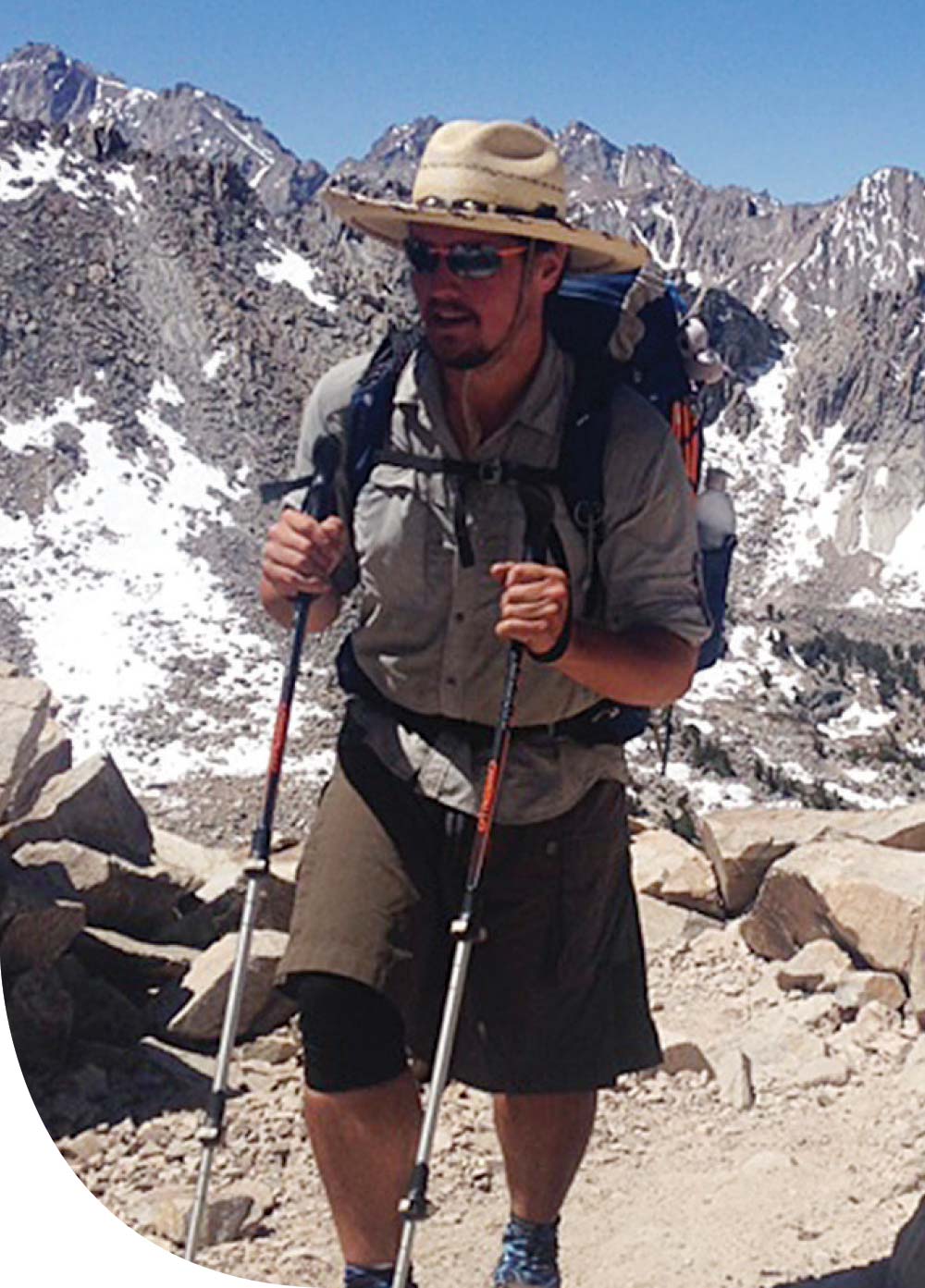
Neal on the PCT in Kings Canyon National Park, California
SD: Now that you don’t have any thru-hikes on the horizon, do you feel slightly nervous?
NH: Of course! But, that nervousness is more about lapsing back into a job I am good at but don’t find fulfilling. Two things I learned from thru-hiking: first, worrying is a waste of precious energy and second, a sense of urgency can either lead to anxiety or clarity. In my case, it’s led to clarity. I can’t sit back and enjoy that post-Trail glow. I feel a pressure to act and act soon.
SD: Agreed. Apart from learning to be adaptable, what other transferable skills did you glean from your thru-hikes?
NH: One thing that all thru-hikers do but don’t realize is a transferrable skill is simplification. On Trail, we are constantly evaluating our needs and changing up our gear and resupply accordingly. Not only that, we are also trying to carry as little as possible at all times. The Trail is a master class in keeping things simple.
While that can lead to a more physically comfortable hike, we don’t realize that it has emotional and mental benefits as well. We learn to have less emotional baggage. We have less clutter in our houses. We get rid of things we don’t need or that weigh us down. Thru-hikers are also excellent at developing routines and staying disciplined. I call it a “flow state.” Things can become repetitive on Trail but that repetition and discipline helps us achieve our goals.
SD: Apart from developing skills and gaining insight, the Trail changes people in subtle or big ways. Returning can sometimes be difficult. What did you find difficult to adjust to post-Trail? What was easy to pick back up again?
NH: What I found easiest to come back to was taking a glass, putting it under a faucet, and filling it with potable water. Readily available hydration is something I took for granted for a long time but, now, I find it marvelous.
SD: Let’s talk about money. Finances are something thru-hikers have a difficult time managing after the Trail but you’ve done well. What is some advice you have for thru-hikers about financial health?
NH: First, don’t thru-hike if you can’t afford it. I know people who hiked the Trail with partial funds or planned to wing it if they ran out of money. I don’t recommend doing either. It’s not comfortable. It’s not responsible. I hiked the A.T. on a tight budget and not being able to indulge in everything in town can be both physically and mentally uncomfortable. Second, make sure you have savings to cushion your return from the Trail. I recommend a few thousand dollars. It makes the job search and living situation so much better. Also, the job search can take an indefinite amount of time. Don’t put all of your savings into a thru-hike. Lastly, make a budget. You don’t want to worry about money on the Trail, at least not all of the time. Plan for indulgences. You will have cravings – a good meal, a warm room, a nice bed. Indulging is good for your health and can reduce some of the anxiety you will certainly feel while hiking. Physical comforts can translate to mental comfort.

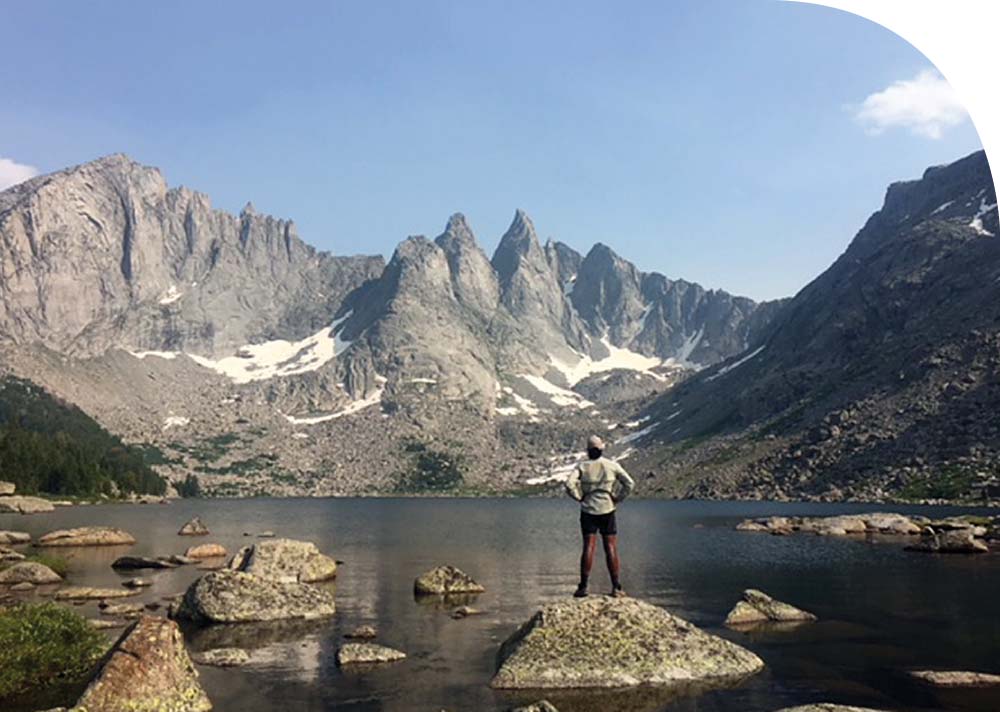
Shalin on the CDT in Wind River Range, Wyoming
SD: I totally agree. But, what are some things you had to give up post-Trail?
NH: Here’s one thing: I can’t eat what I want in large quantities anymore. Unfortunately, I wasn’t blessed with a high metabolism. You have to continue finding a way to stay active. Also, when you’re thru-hiking, you’re focused on reaching the end. But, once that goal disappears you have to find a new one. Finding a long-term career is definitely one goal but, now, I am focusing on getting back into competitive swimming and hopefully qualifying for the Gay Games in 2022 in Hong Kong.
SD: Every thru-hiker builds a relationship when they’re hiking the Trail and, when you finish, re-defining that relationship can be difficult. Do you miss the A.T.? Do you hike now? Do you plan to return or reconnect to the Trail?
NH: Yes, yes, and yes! I miss the Trail community as much as I miss the hiking aspect. Even though I’m a landscape guy — I find serenity in the beauty of the Trail — I still miss the community aspect more. I reconnect [by helping others who are on hikes]. Since I’m in Portland now, I go to Cascade Locks, which is on the Pacific Crest Trail next to the border of Oregon and Washington, and offer rides to thru-hikers, provide a place to stay, or take them to REI so they can grab gear. Or, if I’m on vacation or visiting family in South Carolina, we often take trips to do similar “Trail magic” on the weekends. Also, working at REI, part of the value I provide is the experience of hiking three long trails and helping potential thru-hikers stay light and as comfortable as possible.
I also attend an annual hiker reunion. My friend “Moonwalker” (Marit Gay) who I met while thru-hiking the A.T. in North Carolina, came up with the idea of bringing the ’09 thru-hikers together to hang out for a weekend, cook meals together, go off on day hikes, and reminisce about our thru-hiking days. Our first reunion was in the Shenandoahs in 2011 when we rented a cabin in the park. We’ve been getting together every year since.
SD: I can attest to how great these reunions are since I joined you in 2015.
Yes; there’s value in getting together with like-minded people. You experience a bit of culture shock when you return from the Trail. Your friends and family can’t really understand what you’ve been through. They don’t have a context for how you’ve changed and have a difficult time communicating with you and vice versa. Being able to reach out to people who can grasp what you’ve gone through can be helpful. That level of empathy only exists if you stay involved in the thru-hiker community and can help stave off the sense of loss you experience when you leave the Trail.
Shalin Desai lives in Massachusetts and serves as a member of the Appalachian Trail Conservancy’s Board of Directors.
To prepare for a long-distance hike or find out more information from other hikers visit: appalachiantrail.org/adviceandprep